We’ve always been fans of off-the-beaten-path travel, but lately I’ve started to wonder if some of our choices are a bit extreme. It was Afghanistan, and then the security-shenanigans in Pakistan that sent me on this train of thought. Expanding the boundaries of your comfort zone is one thing. Traveling with your own armed guard – even if you’d rather not, and he’s practically stalking you – is another.
The destinations we choose often lead to all kinds of random holiday-planning considerations. We don’t get all tied up in knots wondering if we’ll find gluten-free alternatives at the breakfast buffet. We don’t join forums to ask if the hotel WiFi reaches the beach. Nope, we talk about things like how to cross obscure land borders in the middle of nowhere, or the likelihood of imminent coups and their possible effect on us (I’m looking at you, West Africa). We’re not even necessarily one hundred percent comfortable with every place we travel. Back in Erbil we sat in a kebab shop masquerading as an Italian restaurant debating which upcoming country – Afghanistan or Pakistan – we felt the least uncomfortable with (to think we ever worried about Iraqi Kurdistan in the first place).
By the time we reached the Wagah border in Pakistan (this time) we’d been on the road for almost seven months. Starting all the way back in Cameroon, we’d seen some wild places and done some amazing things. Still, we were looking forward to a bit of a break someplace restful and chill – like…India? Someplace where I can walk down the street and not be the only woman in sight. Someplace where every public space doesn’t bristle with security. A place where it didn’t feel as though we needed to ratchet up the boundaries of our comfort zones just to leave the guesthouse. No one’s ever described India as restful and chill but it’s definitely that someplace.
And I won’t lie, I was dying for some really good food, specifically Indian food. Desi (local) food in Pakistan doesn’t do it for me. It’s ok for a few days and then the oil overwhelms me and I find myself devouring a chicken Caesar salad in a Canadian cafe chain and wondering if the poutine’s actually half-decent (answer: no, it never is). Then I end up feeling guilty that dinner didn’t involve a ton of chili and some mutton, at least.

So we walked across the Wagah border and caught a ride to Amritsar.
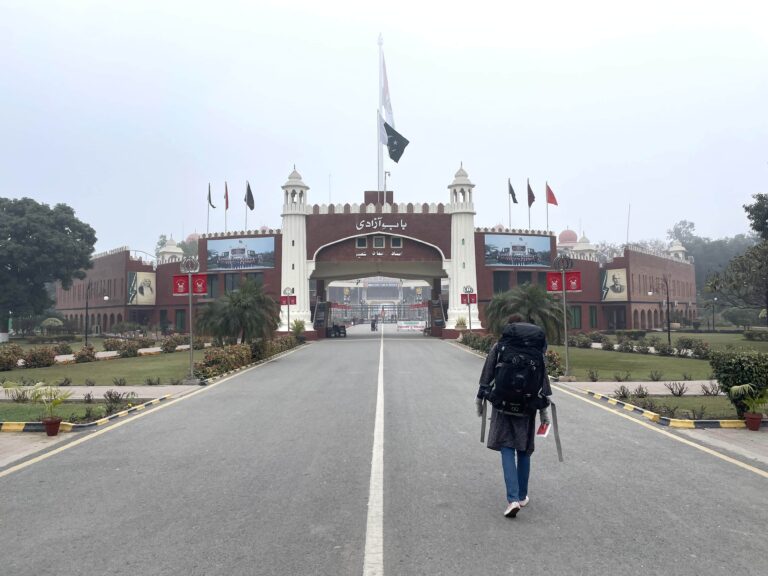
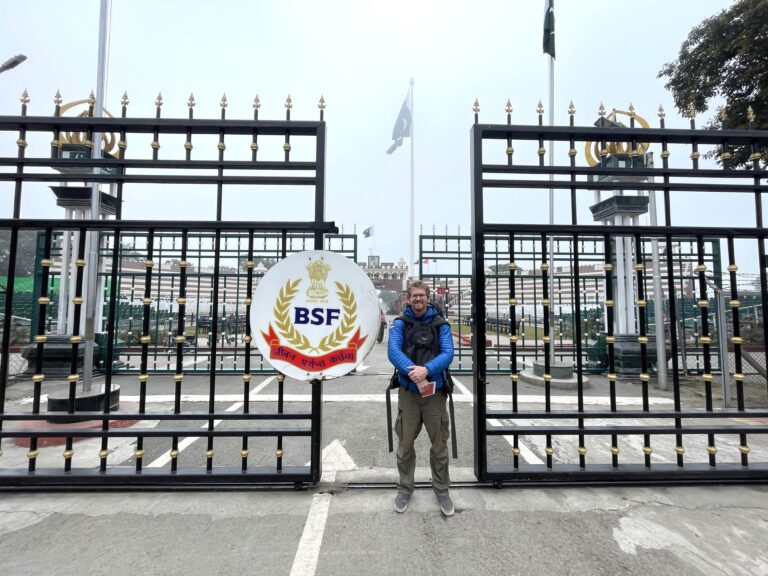
No more boundary-pushing for us, or so we thought.
Easing into India
The plan was to gradually make our way south. Then east. Then north again. So in other words the plan was to just do whatever we felt like in most directions.
First things first – Amritsar. The Golden Temple, one of Sikhism’s holiest shrines, is a stunning sight. Pacing a few barefoot laps on the cold slippery marble around the Amrit Sarovar – sacred pool – from which the city takes its name, feels to me like the perfect arrival in India.
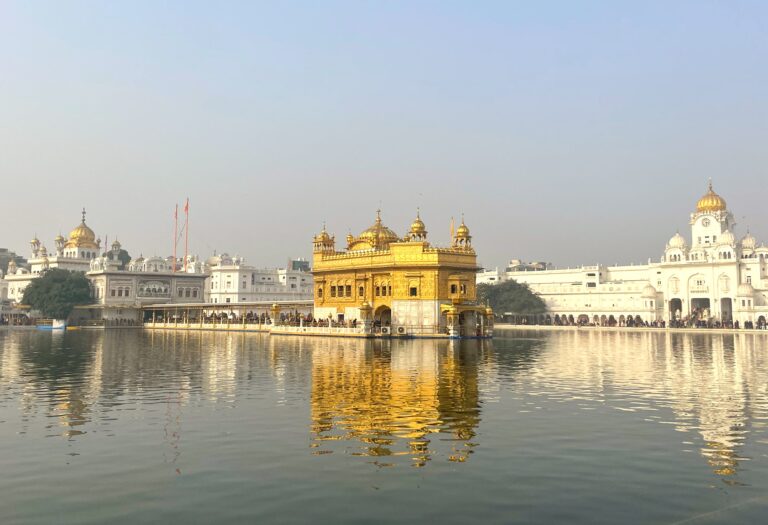
So does eating a bunch of buttery Punjabi food, which is actually the first thing we did.
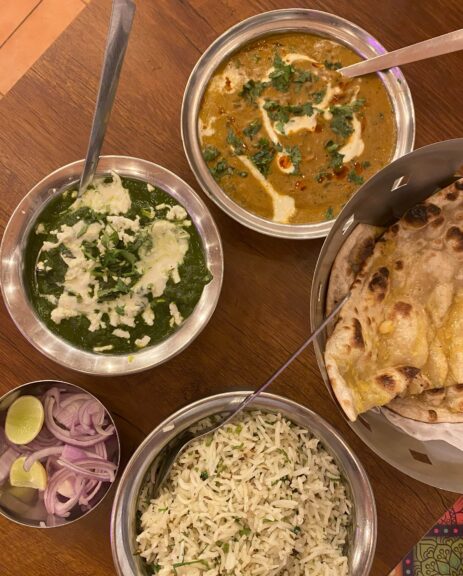
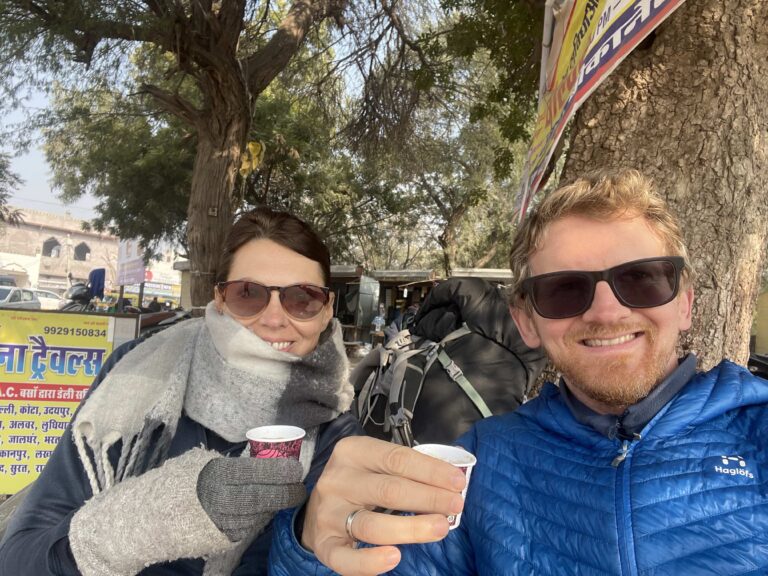
You can rest when you’re dead – except in India
We moved slowly from state to state, lingering for a little while in Rajasthan, then Maharashtra, and Goa. ‘Where crowds are, there I am not’ said a long-dead Sufi saint whose tomb we’d recently visited in Pakistan. I assume it was his polite way of saying he’d never go to India. That statement really resonated with me. As a huge introvert, I’m no fan of crowds.
Eventually our mission to chill took us to Nasik. If you didn’t realise Nasik is in the heart of India’s wine region, or that India has a wine region…well, you’re not alone. You can’t get much more comfortable than hanging out at a vineyard, right? Actually you can, by going to a vineyard in Italy or France or almost anywhere else instead of one in India – on Republic Day no less, which meant insane crowds. But this is India. There are always crowds, and they are always insane.
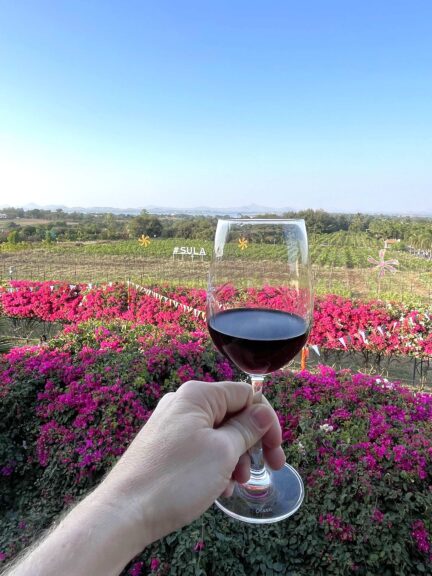
Still, Pakistan’s dry (not to mention Afghanistan) and we both felt it was well worth it.


If you’re deliberately looking for a way to test your personal limits, I recommend dropping by the Taj Mahal. Unless you’re traveling in the opposite direction of Agra, in which case the ‘Mini Taj’ in Aurangabad will do nicely.
The Mini Taj is the final resting place of the Mughal Emperor Aurangzeb’s first wife. It’s hard to imagine a less restful resting place than one trampled over by millions of tourists annually, but see my remarks above about crowds in India. There’s not much rest for most of the dead in India anyway, since the reincarnation cycle of death and rebirth goes on indefinitely.
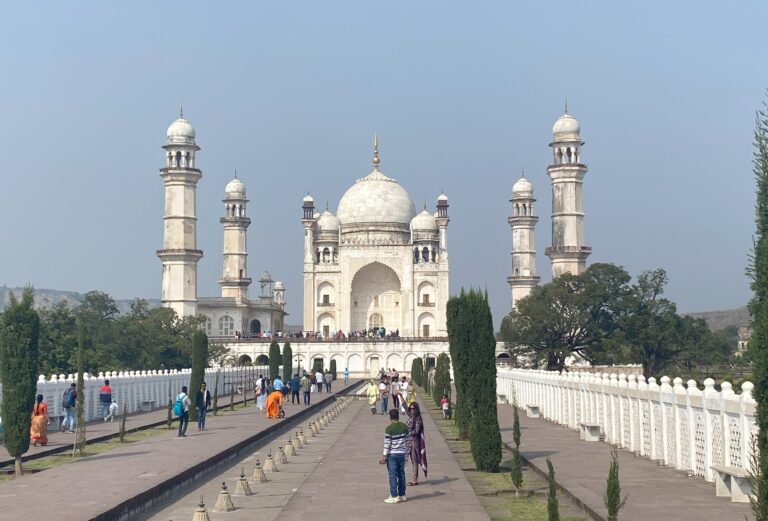
As foreigners at any monument of national significance in India, our role is to pay an entrance fee of up to twenty times what the locals pay, and then serve as a extra in group photo shoots. I generally spend this type of activity watching in my peripheral vision for the furtive movements of large families converging on us. Oyv accidentally made eye contact with a proud dad: that’s how he wound up pressed against an empty fountain with a very bemused-looking baby in his arms, posing for portraits.
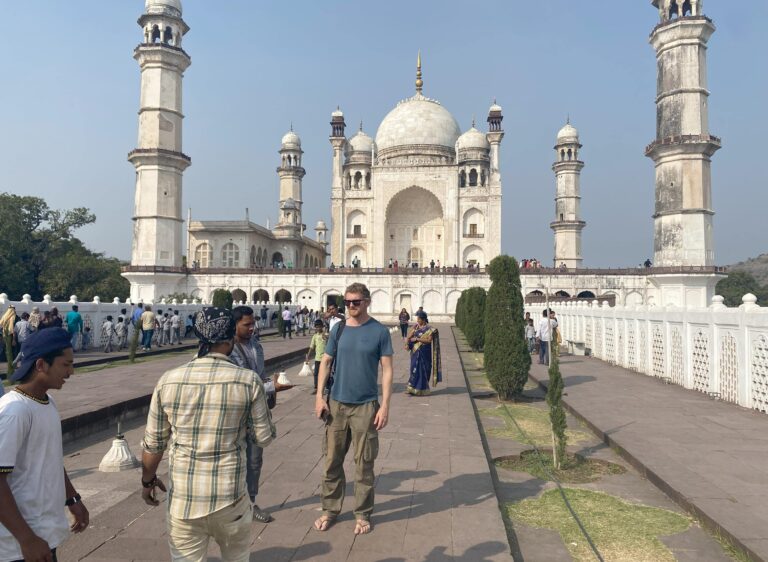
But as for Goa, the only way you can push yourself there is by drinking too much or overdoing it on shamanic drumming, mantra chanting, or sound healing sessions.
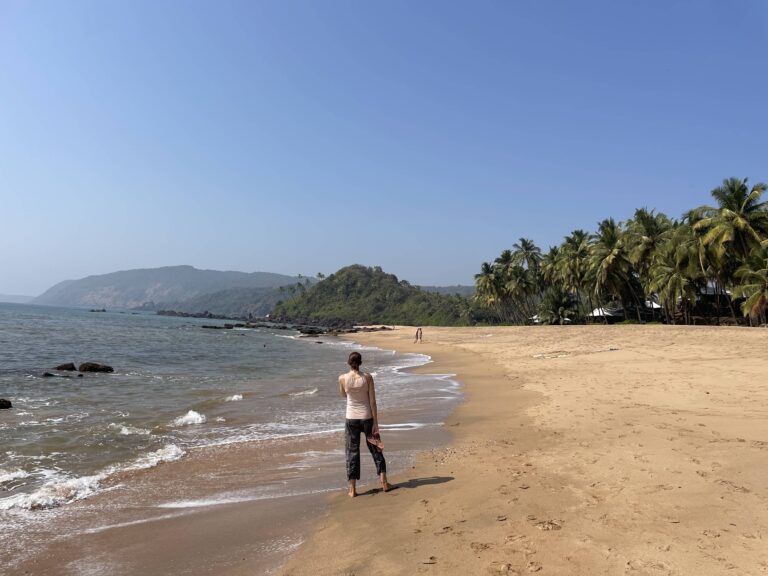
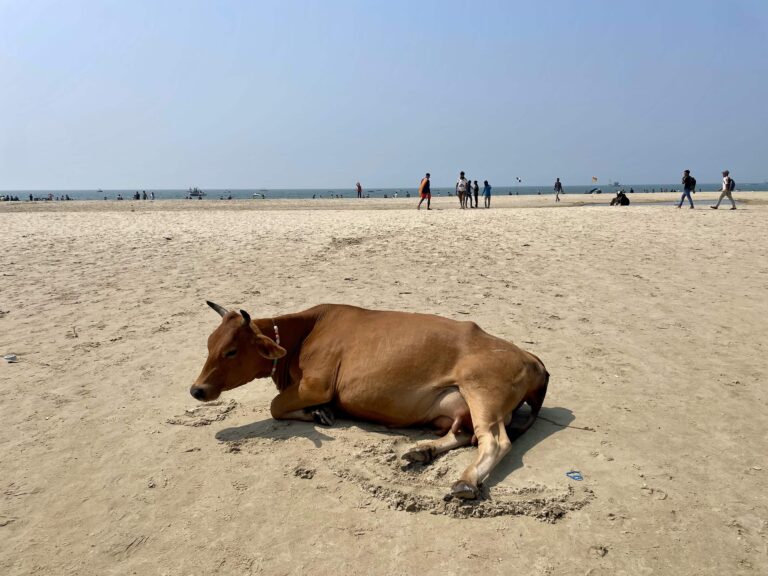
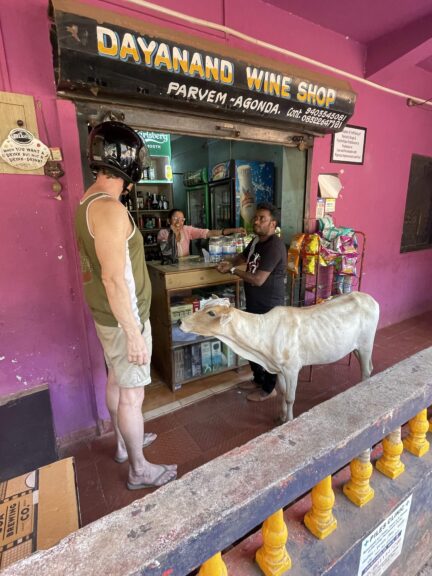
We moved into a little Airbnb near Agonda beach, hired ourselves a scooter, and spent a few lazy sunny days zipping along the coast between laid-back beach villages.
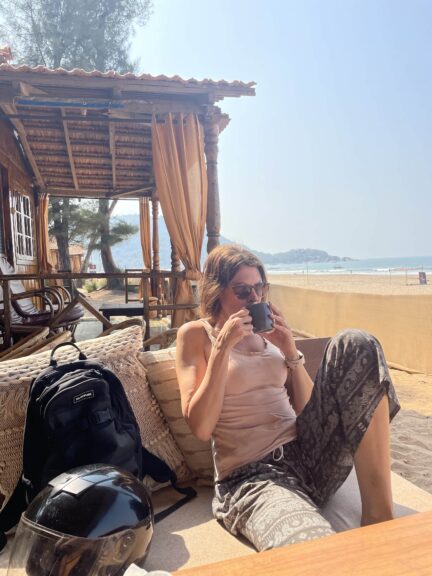
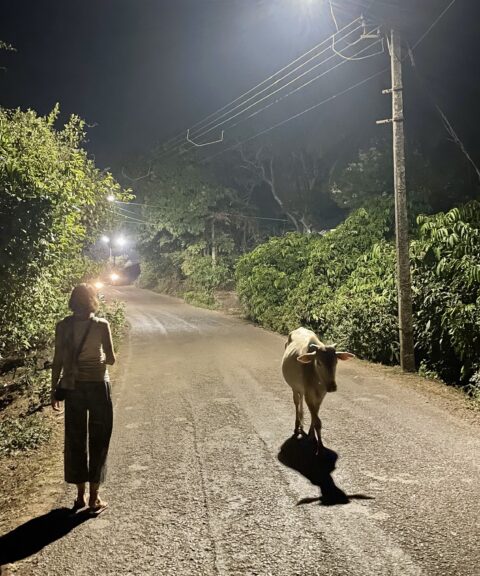

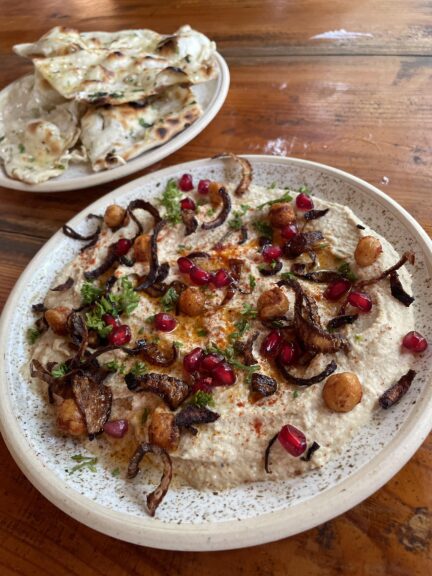
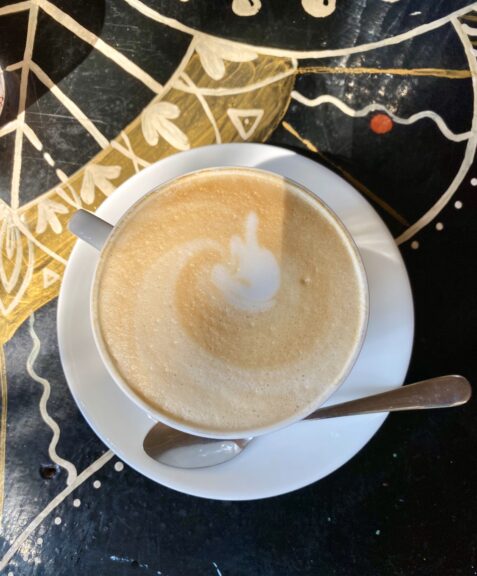
And we ate all that good food we were looking forward to, and then some.
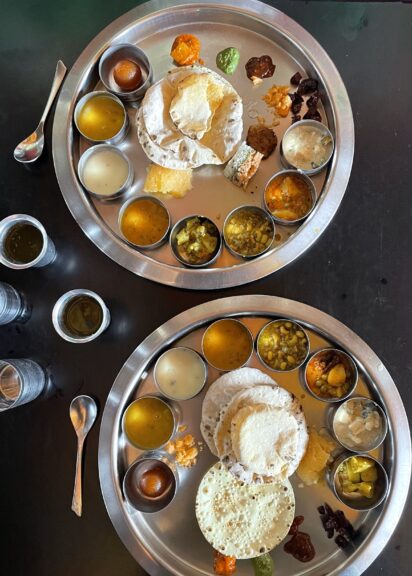
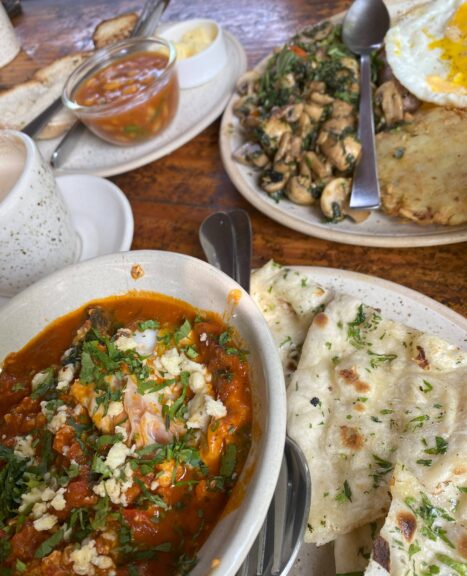
Om Shanti
Then we lingered longer than we meant to in Karnataka, the next state down.
There’s a huge temple in Hampi, which broadcasts a reverberating ‘Om’ at all hours of the day. It makes a nice change from Call to Prayer.
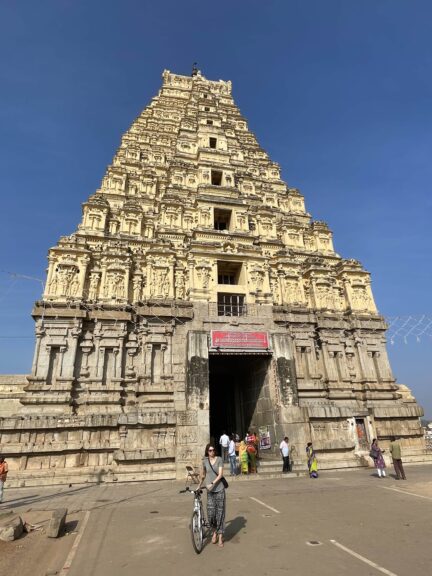
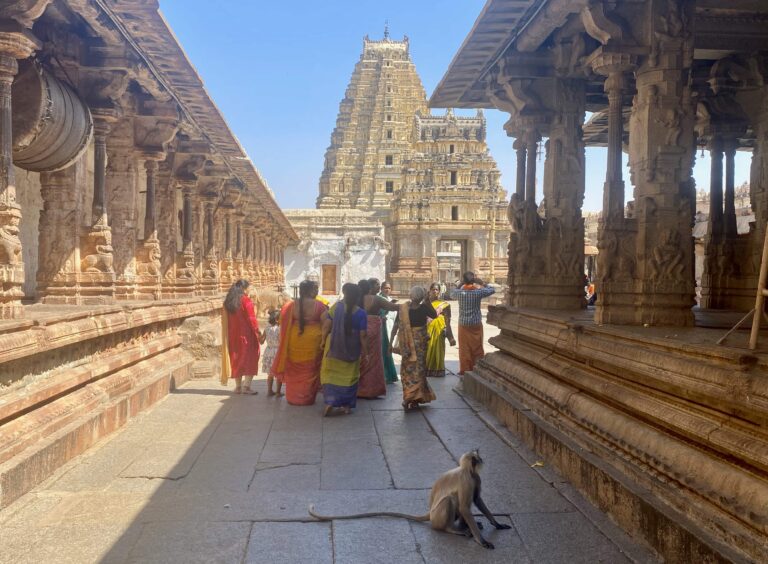
We hired bikes for a day and lazily pedaled around the ancient Hindu temples scattered around town, trying to get a grip on the 330 million-strong pantheon of Hindu gods.
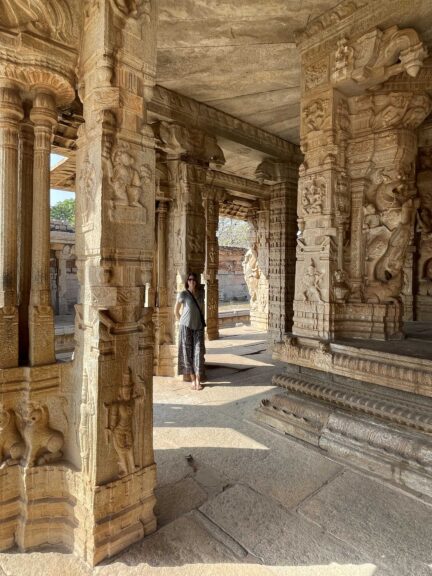
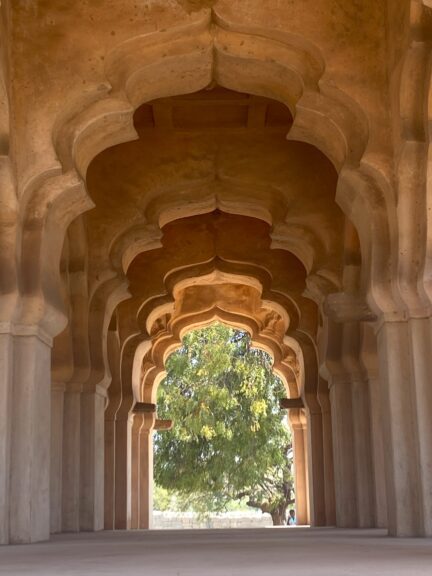
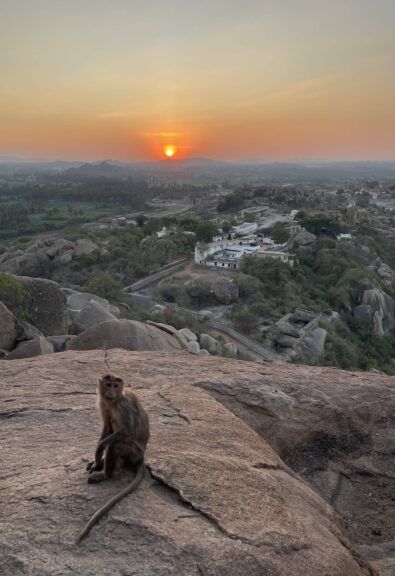
But the citizens of Hampi were gearing up for a festival – the third festival we’d accidentally stumbled onto so far – and the promise of that much chaos was enough for us to move on to Mysore.
Given Mysore’s status as a yoga capital, we checked into a yoga shala (school), envisioning a lot of mindfulness, maybe some left-nostril breathwork. Oyv recognized the man gazing down at us from a flower-garlanded portrait in the meditation hall but wasn’t sure where he’d seen him. As it turned out, the man in the portrait was Osho, a highly controversial guru/cult leader depending on who you ask, and Oyv recognized him from a documentary about his cult in Oregon in the 1980s. If you’ve seen ‘Wild Wild Country’ on Netflix, then you know that Osho’s methods are the kind that could push most people right over the edges of their comfort zones, pretty freaking fast.
To our relief the school didn’t embrace Osho’s more unorthodox teachings, although I can’t say that definitively since sometimes I fell asleep during meditation sessions and might have just missed inflammatory remarks. Either way, we happily slipped into a daily routine of yoga classes and meditating.
Shanti is inner peace, and chanting it three times at the beginning or end of a class is for peace in the body, the mind, and the spirit. We embraced it all wholeheartedly, and then spent our afternoons lounging and reading (and drinking fabulous peanut butter smoothies) in one of the cafes nearby, all of which were filled with people in yoga tights.
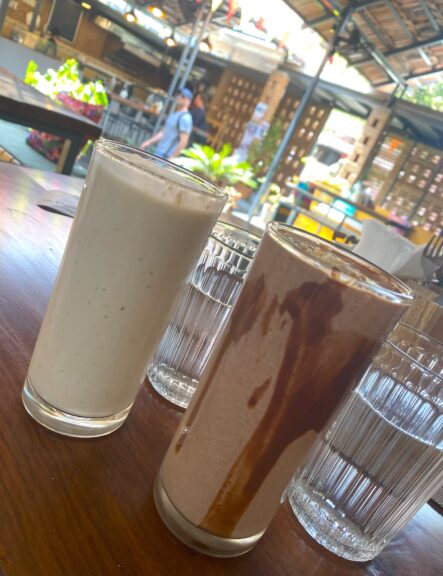
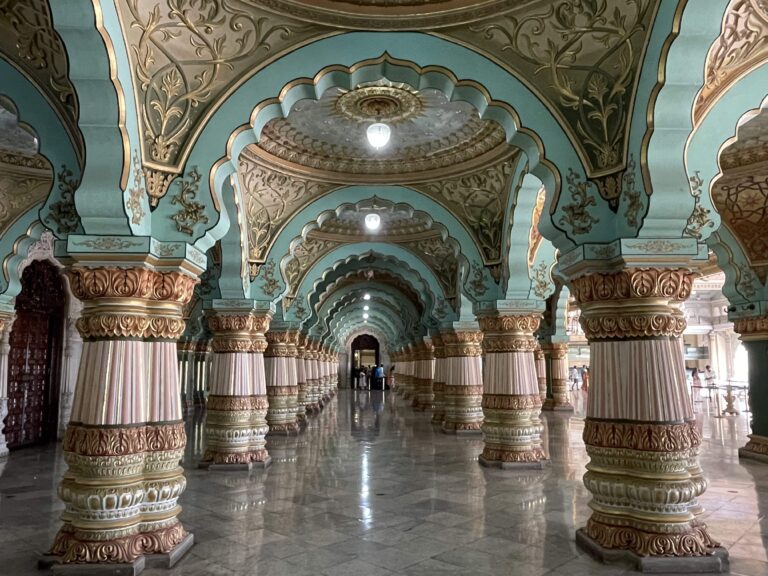
But it was challenging, in a whole different type of way.
If, like me, you’ve been practicing yoga for years but looking to discover everything you’ve been doing wrong, then a six am class in Mysore is the way to go. Oyv, whose familiarity with yoga stopped at 1980s-style stretches from elementary school gym class, tore his pants right open in the second class and was just glad his underwear was the same color.
And flexibility (or lack thereof) wasn’t the only challenge in store for me in Mysore. I had a weird, visibly big lump in my neck. Attempting backbends in class I could feel it sticking out. It was interfering with my sense of shanti, so I went to a doctor one night after class. He took a single look at me and said ‘That’s your thyroid’. The very next morning, instead of twisting myself into knots in Hatha, I was in hospital getting stabbed in the throat with a long needle. Next up, bloodwork and an ultrasound, and a couple days of worrying while the doctor threw around words that made us both super uncomfortable, like ‘benign’ and ‘malignant’.
So we extended our stay in Mysore. Only now in between yoga classes we had doctor appointments, hours of Googling ‘thyroid cancer’, and FaceTiming sessions with my Mom (I desperately wanted her to come make chicken noodle soup or otherwise fix all this for me).
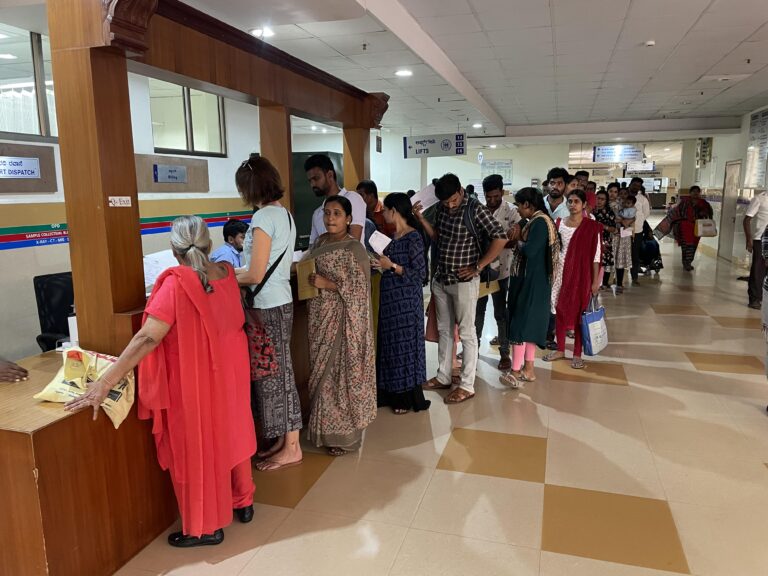
On the bright side, healthcare is efficient in India. I could walk into a hospital, take a test, and leave with results in hand the same day. It felt like questions were always welcome, too. After an ultrasound, I went back to ask the technician another one. ‘Come right in’ said the nurse when I knocked on the door. Entering the room I found a shirtless man stretched out on the table getting his own ultrasound. Stammering an apology I backed out quickly. ‘Not at all Madam, what is it?’ said the tech, scrolling the wand over the current patient’s belly. The two of them looked at me expectantly.
Although my test results were benign the doctor wanted to operate and remove half of my thyroid to be certain. Surgery and recovery, in a foreign country: yet another way to expand the comfort zone. I’ve never had an operation in my life and wasn’t keen to have one now, so Oyv and I went after a second (and a third) opinion. The next two doctors disagreed with the first one, advising against surgery. In the end, as Mysore’s newest leading experts on thyroid issues, we agreed.
We’d stayed at the yoga school longer than we planned, but it was one of those things that just worked out. It had to be the best place to stay at when I was taking tests and dealing with unnerving issues. We’d expected India would be pretty comfortable, and mostly it is, but life’s unpredictable. So is travel. So is India.
Read More
For more of our adventures (and misadventures) as we travel from Cameroon to Japan, check out the rest of my stories from the road.
Or have a look at these stories from our previous visits to India.



